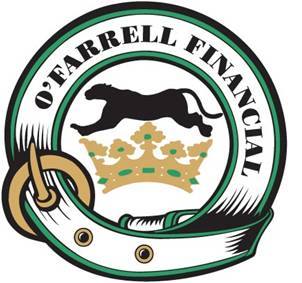Registered Education Savings Plans: Part 1
By Cyndy Batchelor, BCom Financial Advisor, O’Farrell Financial Services
As parents, we hope that one day our children will grow up to become contributing members of society. Often, this means contributing through employment.
Today, many workplaces require education beyond high school.
Just like our children, this education can come in many forms. Employers look for
specific education such as a University Degree, a College Diploma, a Trade School Certification, or specific specialty courses. How can a Registered Education Savings Plan (RESP) help you plan for your child or children’s future? Here are the answers to some of the most frequently asked questions regarding RESPs.
Q: What is the diff erence between a Group or Pooled RESP and Self Directed/Bank RESP?
A: A Group or Pooled RESP is where all the earnings and grants of all the participants are grouped together set up by birth year – no matter what family. Additionally, investments choices, contribution and withdrawal rules are more restrictive. A Self-Directed or bank RESP is owned by the Subscriber (usually the parent). It can be an individual plan (for one child) or family plan (for multiple siblings), there are no investment restrictions, and contributions can be made at any time within the lifetime RESP maximums ($50,000) and withdrawals can be made for post-secondary education with limited restrictions.
As we only deal with Self Directed RESPs, all the following information will be based on a Self-Directed RESP.
Q: How much is the RESP Grant?
A: The Basic Canada Education Savings Grant (CESG) is 20% up to $500 for one year. You can also receive the grant for one previously missed year. Which means you may get a grant for up to $1000 per year – based on a $5000 contribution. There is also an additional CESG of either 10% or 20% of the first $500 contribution based on your Net Family Income. Additionally, several provinces have other lifetime grants, such as the Canada Learning Bond (CLB), which may be added to your contributions.
Q: Should I open an Individual or Family Plan? And what is the difference?
A: We normally recommend a family plan. A family plan can have more than one benefi ciary (related by blood to the contributor). If you are starting out with your first child, you
can start a family plan with one child and simply add more children to the plan as they come along. When it is time to use the funds, if one child does not go to post-secondary school, your other children will have the opportunity to use the grants and income accumulated in the family plan.
Please stay tuned for Part 2 of our discussion about RESPs in next month’s North Dundas Times.
In the meantime, if you have questions, connect with us!
Be sure to follow us on Facebook @OFarrellFinancialServicesInc.

